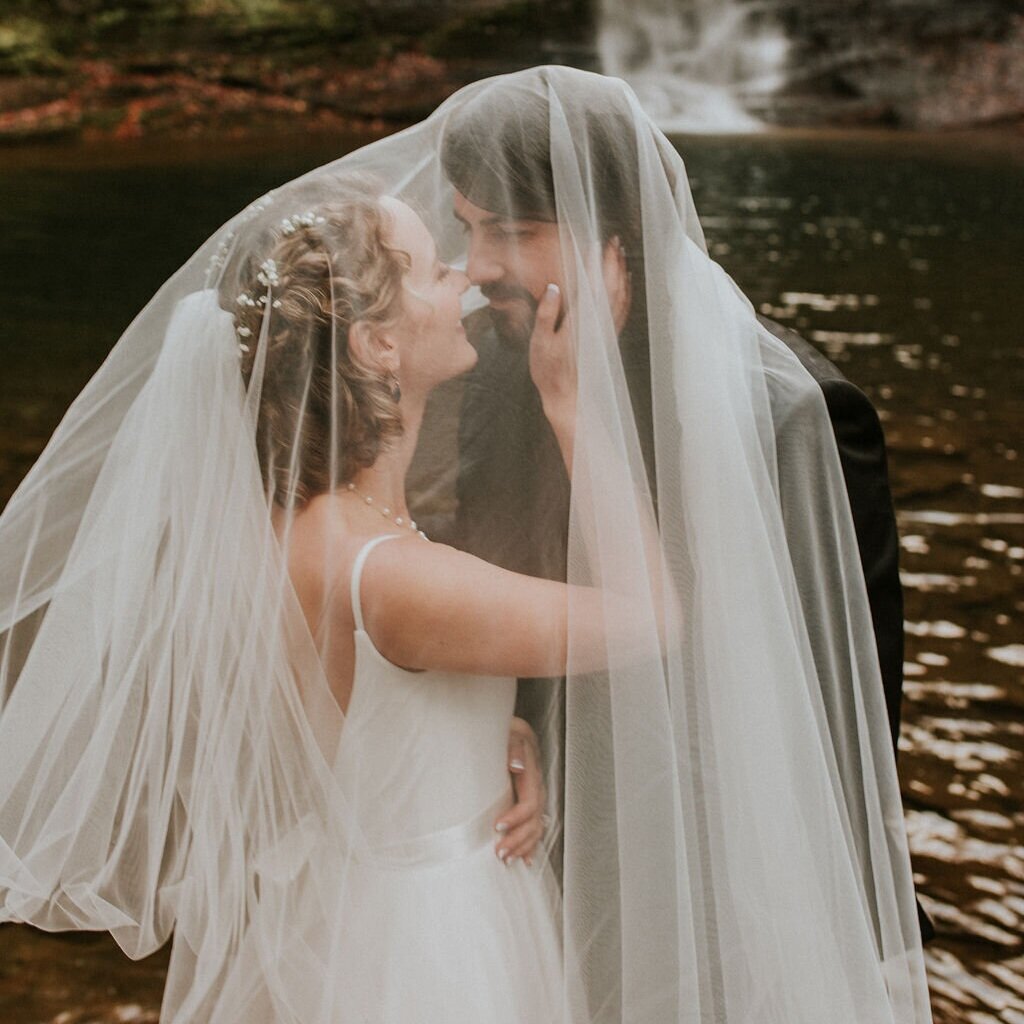Why Do We Wear Wedding Veils?
There’s no other occasion in modern life where you get to wear a veil. Headpieces as a whole are increasingly rare. Except for maybe a ball cap on the lake or a slouchy beanie in the winter. But even this headgear is more functional than stylish. It's working to keep your head warm or protect you from the sun.
Veils serve no functional purpose. Their sole purpose is to be delicate, elegant, and beautiful. They’re even the inspiration for many cascading waterfalls around the country. There are "Bridal Veil Falls" in Yosemite, North Carolina, Tennessee, Colorado, and Utah.
Every bride’s style is different. Veil’s aren’t for everyone. But there’s no denying their delicate beauty. Bridal veils are a tradition in almost every culture. But their history and origins are a little different in each one.
The Bridal Veil in Ancient Rome
Ancient Romans believed that brides were vulnerable to enchantment. Evil spirits would actively want to corrupt her purity of spirit. So they would hide the bride behind a veil. The veils would not be white like the wedding dress. They were colored in reds, yellows, and oranges. The bright colors would ripple as she walked, imitating a flickering fire and scaring off any evil spirits.
The Bridal Veil In The Victorian Era
If you’ve ever watched Downton Abbey or Bridgerton, you know that status was everything in Victorian-Era England. Your wedding day veil was representative of your societal status. High society brides would have veils that were long, heavy, and detailed. Royal brides had the most intricate and (I can imagine… cumbersome) headpieces.
The Bridal Veil in Religious History
Throughout many religions, the bridal veil has been touted as a symbol of purity and chastity. In many religions, it’s a symbol of humility and respect before god. In arranged marriages, the unveiling of the bride would be the very first time the husband would lay eyes on his wife. The bride would be veiled until the exact moment of the wedding vows. This was to delay any public embarrassment in case the husband didn’t like the look of his bride. Personally, I’m so thankful this patriarchal tradition is in the past.
The Bridal Veil in Superstitious History
Ever heard that it’s bad luck to see the bride before the wedding? This superstition takes it to the extreme. At a certain point in time, veils were not the sheer, tule things they are today. They were heavy, dense fabric, and the bride could not see or be seen through their veil. Fathers would escort their daughters down the aisle, not because they were “giving her away”, but because she literally couldn’t see. She needed someone to guide her so that she wouldn’t trip and fall.
Thinking about Wearing a veil? Here’s the terminology:
Shoulder Length:
Pretty descriptive vocab term, to be honest. These veils cascade to the shoulders (or just below the shoulders). This type of veil won’t hide any of the details in your dress.
Elbow Length:
This type of veil is most commonly worn with cinderella-style gowns with full skirts.
The Blusher:
This is just a delicate piece of cloth that fits onto a headpiece and partially covers part of the face. Picture 50’s era little hats with veils. They’re also sometimes called bird’s nests. It can be swanky and sexy but fits only with a certain type of dress.
Waltz Length:
This is a long and luxurious veil, that falls somewhere around the knees and ankles. It’s a good option if you like a long veil, but also want to wear it all night. It won’t get in your way while you’re dancing with your spouse or mingling with your relatives.
Chapel Length:
These veils fall to the floor, but do not have a train. It’s a formal look, without the tripping hazard.
Cathedral Length:
This is what you’ll wear if you want to feel like a true queen. You’ll have a long train flowing behind you as you saunter down the aisle. It’s a good idea to have a train bearer for this style.
Veil Alternatives:
The Flower Crown
For all my bohemian goddesses out there!
The Tiara
A veil isn’t the only way to make yourself feel like a true queen!
The Sparkly Half-Crown
Rocking the half up/ half down hairstyle? Getting a crown that doesn’t fit on your forehead can be a great accessory.
An Ornate clip
I love using clips as your “something borrowed”. It can be an elegant floral clip, or something more sparkly.
Something Vintage
If you’re a vintage babe, there are so many amazing options out there. You can do a vintage beaded headpiece or lace headband.
A Hat
There are no limits here! You can let your personality shine through, whether you’re a posh wide-brim kind of girl or a Tennessee cowgirl.
A Diadem
A diadem is just as sparkly as a crown… but it’s worn more as a headband. You can choose something beaded, jeweled, or even adorned in crystals.
Au Naturale
Who says you have to wear a headpiece at all?! If you’d be more comfortable going with natural, loose hair DO IT!
Let’s Make Our Own Traditions
Veil history has its roots deep in the patriarchy. But In modern times, the wedding veil is more like the icing on the cake. It’s a decoration made to enhance (not hide) your beauty. If you’re not sure what type of headpiece you want (or if you want one at all!) I would suggest finding your dress first. Then try on a few different headpieces with your dress and seeing what feels right. I can almost guarantee you’ll have “a moment” when you’ve found the perfect pairing.

